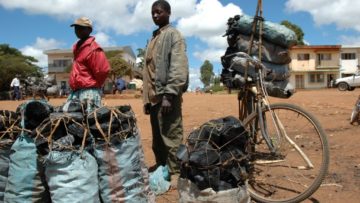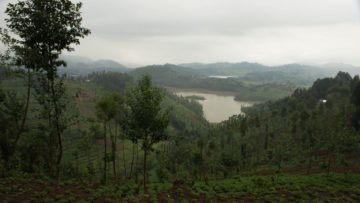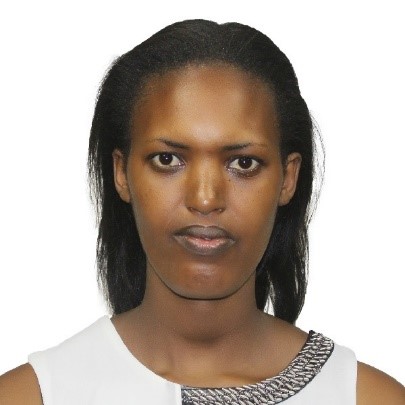Between 1990–2016, 7090.02 km2 (64.5%) and 1715.26 km2 (32.1%) of forest and grassland cover, respectively, was lost in Rwanda while croplands increased by 135.3% (8503.75 km2). As articulated in Rwanda’s National Biodiversity Strategy and Action Plan, one of the main drivers of biodiversity loss is the conversion of native ecosystems to agricultural land and intensification. The conversion of natural systems to intensively cultivated monoculture results in a loss of biodiversity especially in soil invertebrates and microorganisms. The growing utilisation of inputs from industries such as fertilisers, pesticides and other agro-chemicals results in a greater pressure on natural resources and a reduction in biological diversity. In addition, the use of pesticides in crop production and protection is negatively affecting key pollinators like bees.
Rwanda is the second most densely populated country in Africa. This creates a challenge for agricultural development. The total agricultural land sums up to 67.8% of the country’s total surface. The average plot size is 0.6 ha often divided into three to four sub-plots while 30% of farmers own less than 0.2 ha. These can be opportunities for trees on farms if the right trees are planted in right conditions for the right purpose.
In 2011, Rwanda made an ambitious pledge to the Bonn Challenge to restore 2 million hectares of forest and agricultural land, establishing itself as a global leader in the restoration movement. This pledge corresponds to 76% of the country area. It is complemented by the Green Growth and Climate Resilience Strategy (2011) and the Strategic Plan for Agricultural Transformation (2018) which set the policy framework towards a productive, green, and market-led agriculture sector. One of the principles governing NBSAP was to incorporate biodiversity conservation activities into the planning and annual budgets of agriculture sector.
Owing to the country’s limited land area for afforestation, most of the landscape has been and will be through integration of more trees into farming systems to increase agricultural productivity and maintain environmental services. Such benefits will be communicated to farmers, extension agents and policy makers through well-packaged messages as part of the TonF project. Through research, the TonF project will provide indices that can be used in monitoring and evaluation of trees on farms in different restoration initiatives across the country.
Activities
Calibrating the Biodiversity Assessment Tool in 4 districts (Nyabihu, Rubavu, Rutsiro, and Ngororero)
Organizing choice experiments with farmers to develop an options manual that will support farmers’ decision making on trees on farms
Developing a policy brief for policy makers on trees on farms
Organizing a national level workshop on achieving restoration targets through agroforestry
Developing an information note on the integration of trees in coffee farms
Rwanda News & Stories

Can we grow our way out of the charcoal crisis?
Charcoal production in much of Africa is not only a major source of energy but also often illegal because of its apparent...
Read More
How do you restore land in a small country?
Rwanda will use agroforestry to meet its targets for land restoration and enhancement of biodiversity The Government...
Read More


